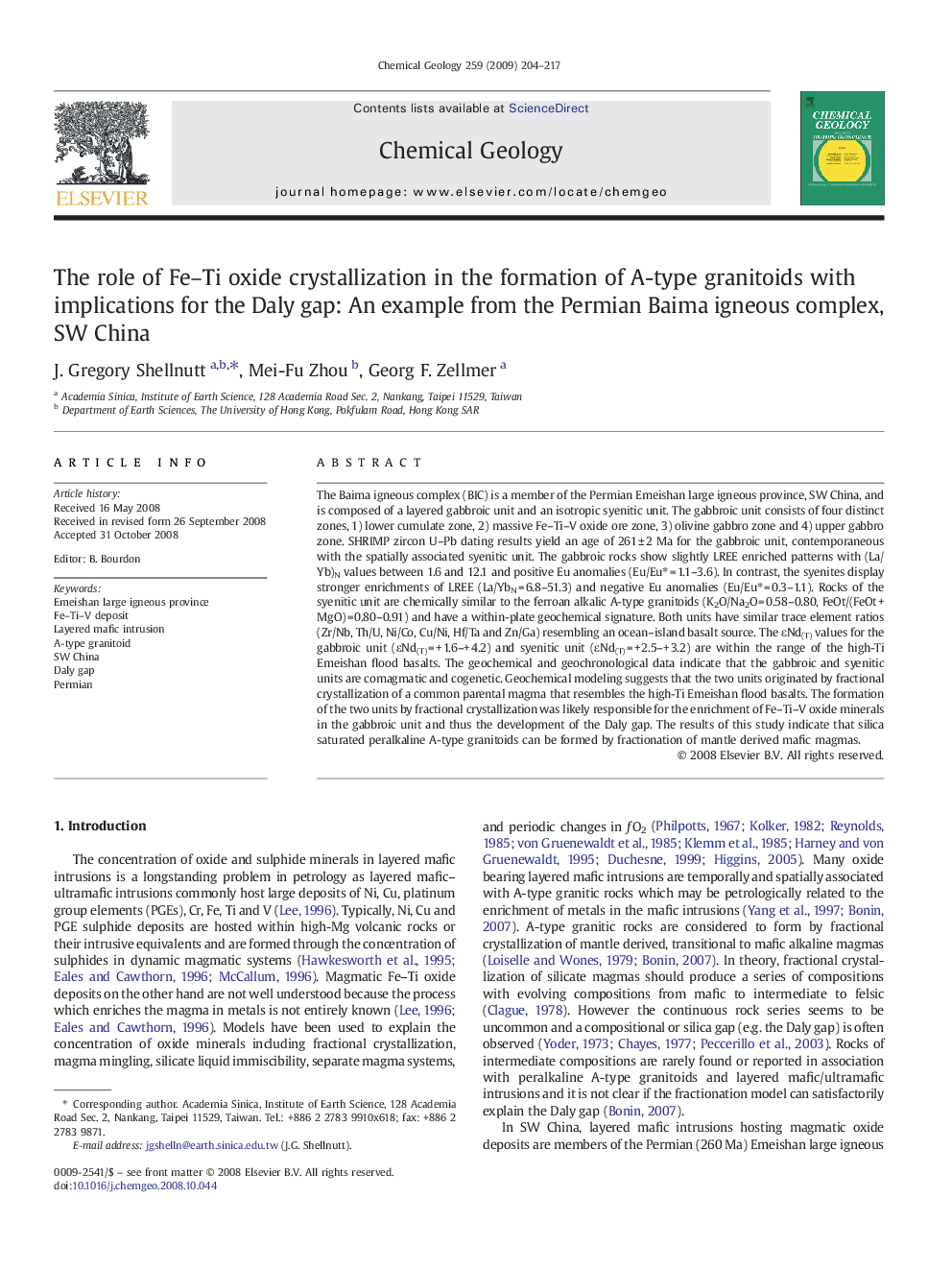| کد مقاله | کد نشریه | سال انتشار | مقاله انگلیسی | نسخه تمام متن |
|---|---|---|---|---|
| 4700404 | 1637713 | 2009 | 14 صفحه PDF | دانلود رایگان |

The Baima igneous complex (BIC) is a member of the Permian Emeishan large igneous province, SW China, and is composed of a layered gabbroic unit and an isotropic syenitic unit. The gabbroic unit consists of four distinct zones, 1) lower cumulate zone, 2) massive Fe–Ti–V oxide ore zone, 3) olivine gabbro zone and 4) upper gabbro zone. SHRIMP zircon U–Pb dating results yield an age of 261 ± 2 Ma for the gabbroic unit, contemporaneous with the spatially associated syenitic unit. The gabbroic rocks show slightly LREE enriched patterns with (La/Yb)N values between 1.6 and 12.1 and positive Eu anomalies (Eu/Eu⁎ = 1.1–3.6). In contrast, the syenites display stronger enrichments of LREE (La/YbN = 6.8–51.3) and negative Eu anomalies (Eu/Eu⁎ = 0.3–1.1). Rocks of the syenitic unit are chemically similar to the ferroan alkalic A-type granitoids (K2O/Na2O = 0.58–0.80, FeOt/(FeOt +MgO) = 0.80–0.91) and have a within-plate geochemical signature. Both units have similar trace element ratios (Zr/Nb, Th/U, Ni/Co, Cu/Ni, Hf/Ta and Zn/Ga) resembling an ocean–island basalt source. The εNd(T) values for the gabbroic unit (εNd(T) = + 1.6–+ 4.2) and syenitic unit (εNd(T) = + 2.5–+ 3.2) are within the range of the high-Ti Emeishan flood basalts. The geochemical and geochronological data indicate that the gabbroic and syenitic units are comagmatic and cogenetic. Geochemical modeling suggests that the two units originated by fractional crystallization of a common parental magma that resembles the high-Ti Emeishan flood basalts. The formation of the two units by fractional crystallization was likely responsible for the enrichment of Fe–Ti–V oxide minerals in the gabbroic unit and thus the development of the Daly gap. The results of this study indicate that silica saturated peralkaline A-type granitoids can be formed by fractionation of mantle derived mafic magmas.
Journal: Chemical Geology - Volume 259, Issues 3–4, 25 February 2009, Pages 204–217